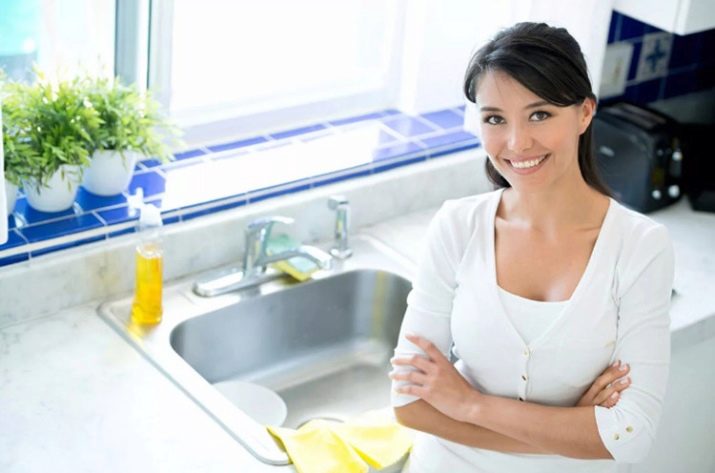All about cleaning the kitchen

The kitchen is considered to be the most popular place in the house for preparing food and eating. That is why cleaning this room takes more time and effort. To make this process as fast, easy and efficient as possible, there are some important rules to follow.
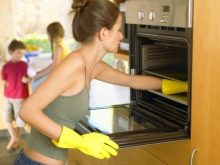
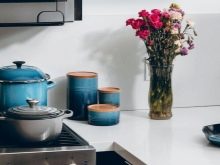
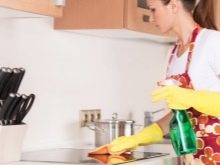
General rules
Since tidying up the kitchen is a tedious process, it's best to plan ahead.
Do not clean and cook at the same time:
- it is unsafe as dirty splashes or cleaning agents can get into food containers;
- two things will take more time at the same time, so cleaning in this case may not be finished even in the evening.
It is very important to free up a small table or some other place in the apartment so that during the cleaning process in the cabinets and the refrigerator, you can temporarily transfer food, as well as pots and other kitchen utensils.
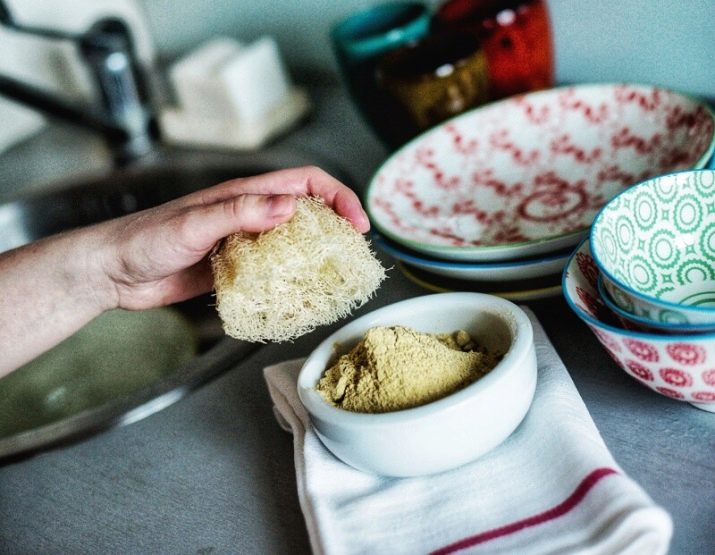
And also it is necessary to adhere to some rules.
- Kitchen cleaning should be damp. Simply "walking" with a dry cloth on the shelves in this case will not work.
- To avoid heavy contamination, light cleaning should be done frequently, preferably daily. General cleaning is recommended about once a quarter.
- Before wet cleaning, turn off all electrical appliances in advance.
In addition, care should be taken to provide adequate lighting.If necessary, you can prepare additional lighting fixtures, such as a desk lamp or flashlight.
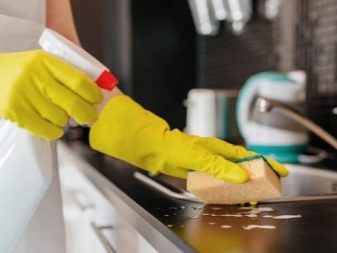
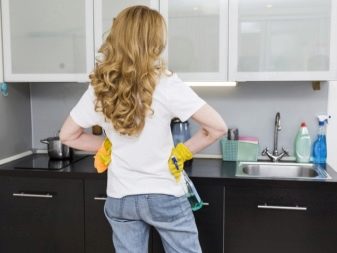
What is required?
So that during the cleaning process you do not have to be distracted, it is recommended to prepare everything you need in advance. So, first of all, you need to take care of your own appearance and protective equipment. Wear a work gown or any other similar clothing. Wear PVC or latex gloves to protect your hands. Due to the fact that one pair can break, you need to stock up on another pair of spare.
You can put on a germicidal mask on your face (optional). It is necessary so that small particles of dry cleaning agents do not get into the mouth and nose in the event of inaccurate use. You should wear non-slip shoes on your feet.
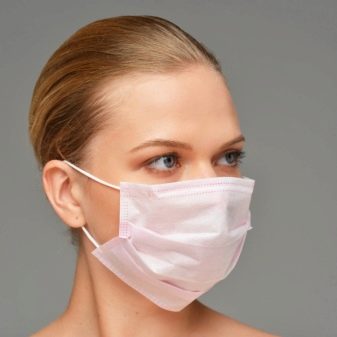

Cleaning products
It is very important to take care of the availability and sufficient quantity of all kinds of cleaning agents. You should prepare:
- All-purpose cleaners like powders and regular baking soda
- fat-dissolving detergents;
- devices for disinfection.
Not only professional products that were bought in the store are suitable. Homemade ones will do too.
So, from fat and other contaminants, it is good to use folk methods, for example, a solution of soda and vinegar. And also ammonia will come in handy.

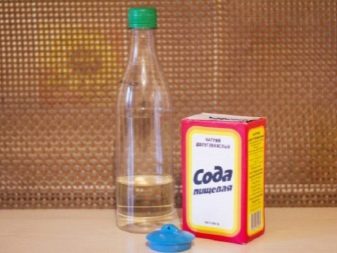
Cleaning tools and rags
It is also necessary to prepare in advance rags and other tools that may come in handy in the process. These include:
- rags of different sizes;
- sponges with a soft and hard surface;
- special melamine sponges;
- metal brushes;
- unnecessary toothbrush;
- paper and cloth towels.
It is better to put all accessories and detergents in some kind of box so that they do not interfere in the process.
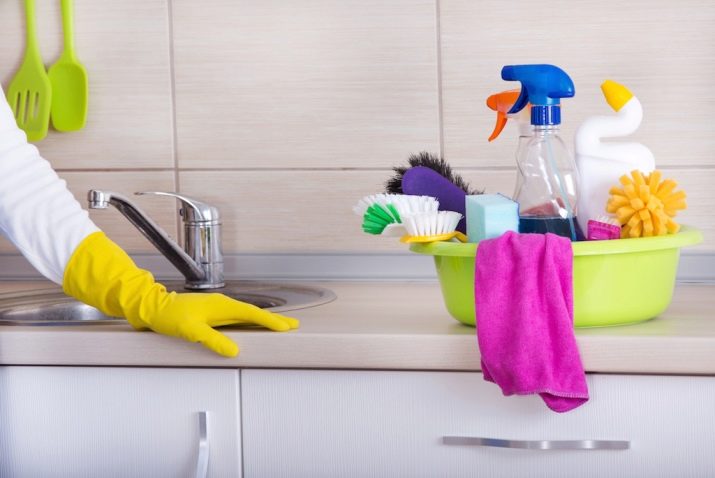
Where to begin?
Traditionally, it is better to start cleaning the kitchen from the cooking area. Surfaces that will need to be treated include a stovetop, an extractor hood located directly above it, and nearby objects (if any).
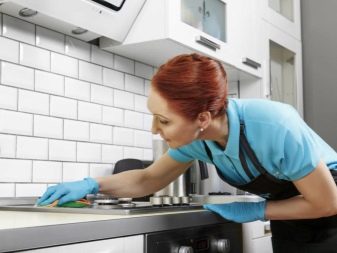
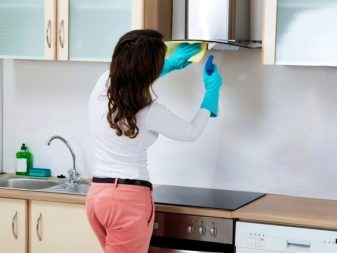
How do I clean the cooking area?
The most contaminated area is almost always the cooking area. Anything can be here: smudges, burnt food, dried out areas, and much more.
At this stage of cleaning, not only the stove, but also the hood will have to be washed from dirt.
Plate
You should start with cleaning the stove. To do this, remove the burners from the gas burner. It is better to wash them with a rag and soap, and then rinse under running water and dry with paper towels. If an electric stove is installed in the kitchen, then it is advisable to wipe the burners with the soft side of a sponge. In addition, you can use a small amount of a fat-dissolving detergent.
When the hob surface is free of the hotplates, apply a sufficient amount of a suitable product to it. Next, you need to clean the surface of dirt and wipe it again with a rag.

In the next step, you can move on to the handles. If they are removable, then it is better to treat them separately with a regular dishwashing detergent, and then rinse them under running water. Fixed handles are best cleaned with a toothbrush dipped in a little ammonia. Additionally, you can walk with a damp cloth.
Next, you should proceed to cleaning the oven. It is better to pre-soak the existing grates in warm water with the addition of detergent. This will make it easier to wash off dried food pieces. While the grates are soaking, you can proceed to cleaning the oven.
An important point! The oven must be cleaned with a special product. If for any reason it is impossible to buy it, then it is recommended to use salt, soda and water. This solution will cope with the task no worse than the purchased one.
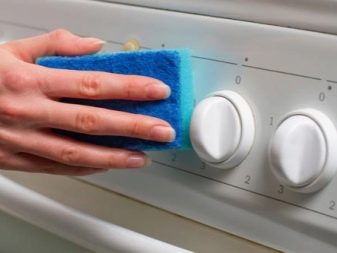
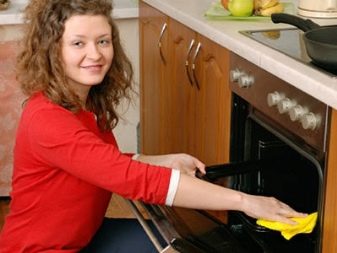
Hood
When the stove and oven are ready, it is necessary to get rid of dust and other contaminants from the hood itself.Here, a soap solution will do the job best. It is necessary to wipe the surface with a cloth dampened in it. Efforts should be made in particularly polluted areas. Separately, remove the filters and place them in a container with soapy water for a few minutes. Then they need to be rinsed under running water, wiped thoroughly and reinstalled.

How to clean household appliances and plumbing?
Before starting to wash household appliances, you must once again make sure that all appliances are disconnected from the power supply. The best place to start is in the refrigerator. Beforehand, it is necessary to remove all food products from it.
In the process, it is necessary to cope with two important tasks: disinfection and elimination of the existing unpleasant odor. You can prepare yourself a very effective remedy for both tasks. To do this, dilute a few teaspoons of baking soda in 1/4 cup of warm water. This solution should be applied to all surfaces in the refrigerator, and then leave the door open for airing for a few minutes. If necessary, you can additionally remove excess moisture with a paper towel.
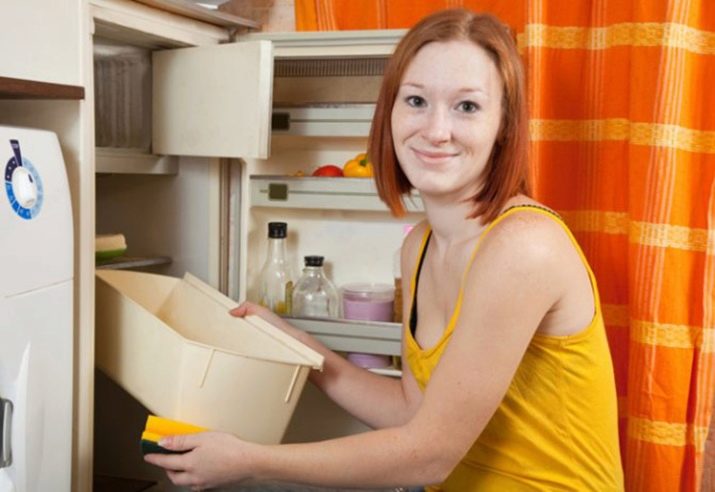
The microwave oven also needs to be cleaned either with a special product (available from the store), or use the same soda solution. Using the same scheme, it is necessary to clean the surface of other equipment available in the kitchen.
Particular attention should be paid to cleaning the plumbing. You should start directly from the sink. Here it is best to arm yourself with a special gel, which not only removes pollution, but also kills all germs.
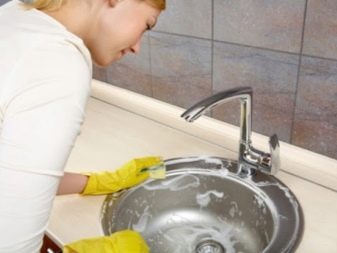
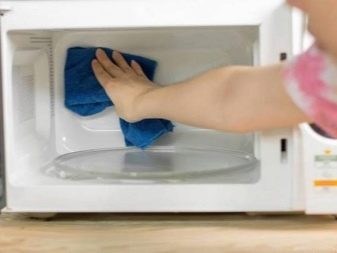
Cleaning lockers
Before you start washing cabinets, it is better to deal with food supplies: the good should be put aside, and the things that are no longer needed should be thrown away. It is best to clean the inside and outside of the kitchen cabinets with a soapy solution. Outside of streaks and grease, a melamine sponge is perfect.
The main thing when washing cabinets is not to overdo it with the amount of water. Otherwise, excess moisture can ruin the surface of the furniture.
Using a sponge and a cleaning agent, you need to get rid of all kinds of dirt on the countertop and dining table. You can also use soapy water here. It will not be superfluous to clean the pipes. To do this, they must be filled with a special solution, and after a while rinsed with a stream of warm water.

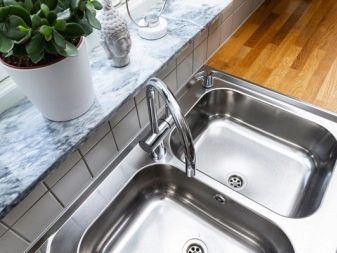
Washing windows and batteries
Windows should be cleaned with a special spray spray, or you can use ammonia. Wipe dry with paper towels.
The batteries can be initially vacuumed a little, and then the stubborn dirt can be removed with a sponge and any universal cleaning agent.
To prevent water from dripping onto the floor, at the end of the procedure, wipe the batteries dry with a rag or paper towel.

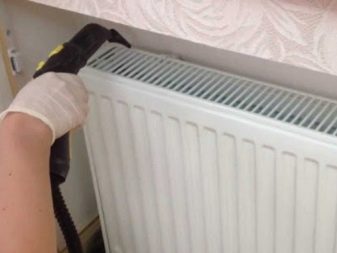
Wipe floors, walls, ceilings
At the final stage of cleaning, you need to wash the kitchen itself, namely: wipe the walls, ceiling and floor. A soapy solution is sufficient for the ceiling and walls.
An important point! The use of certain detergents is permissible only taking into account the characteristics of the materials with which the surfaces are covered. So, it is not recommended to wipe paper wallpaper with an excessively damp cloth.
For cleaning the floor, it is best to use a large cloth. Pour warm water into a separate container, add a special detergent for cleaning floors there. After the floor is cleaned, the kitchen cleaning is complete.
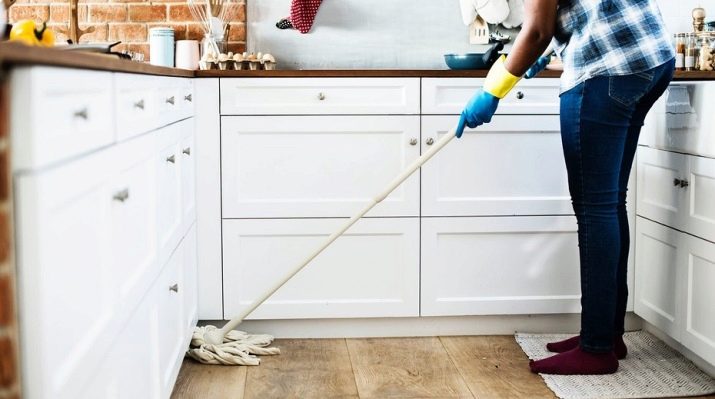
Tips for every day
To avoid the accumulation of a large amount of dirt in the kitchen, care should be taken during the cooking process. The main contamination, for example, when something is spilled, it is better to clean up immediately.
To always keep the room clean and comfortable, you must adhere to the following rules:
- do small cleaning daily;
- prevent pipe clogging;
- promptly throw spoiled food out of the refrigerator and cabinets;
- parchment paper should be placed on the bottom of the cabinets - this will help keep the surfaces clean.
Thanks to these life hacks, the room will always be clean. During the cleaning process, it must be borne in mind that it is impossible to mix ammonia and chlorine when preparing products, since in this case hazardous fumes are formed.
